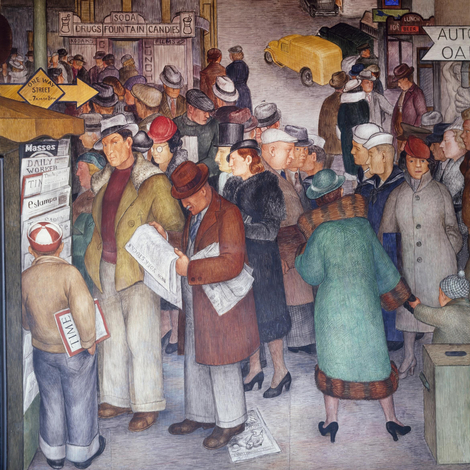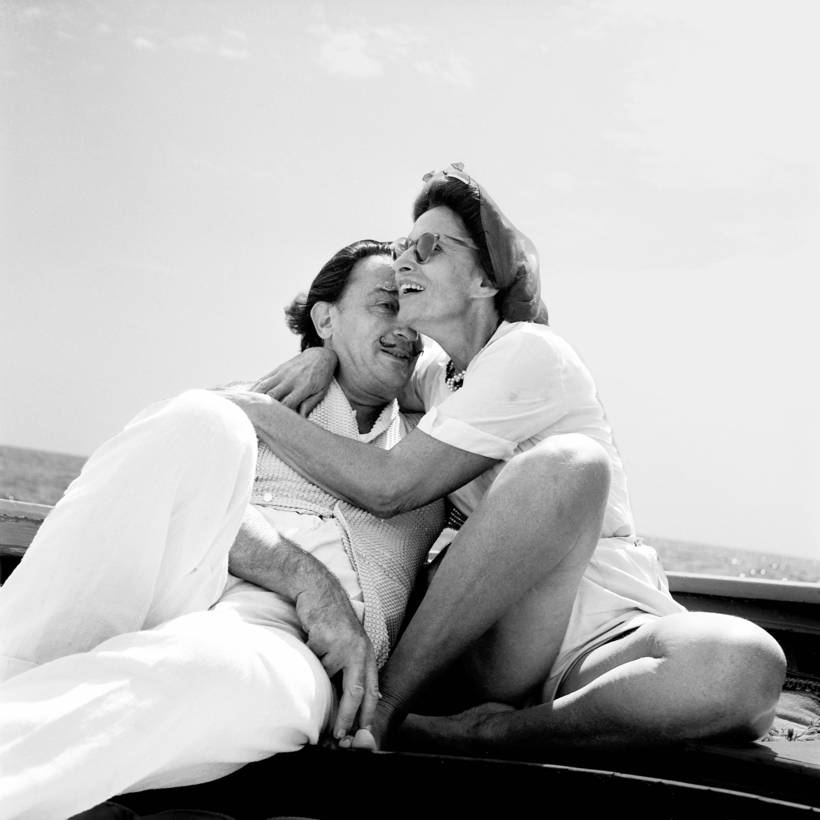A frail, brilliant little girl with a generous smile and a laugh so vast it doubled her over, Gala Dalí was born in Kazan, Russia, in 1894, the year Nicholas II, the last czar, was crowned. She survived the Russian Revolution, two World Wars, and the Spanish Civil War, creating work that reflected the major events of her century.
The second in a family of four children, Gala was only 10 when her father disappeared while searching for gold in southern Siberia. Her brother Vadka stepped in as a friend and protector, and she found comfort in her studies and imagining herself as a heroine of the great Russian fiction she avidly consumed. A star pupil at the M.G. Brukhonenko academy, where the children of Moscow’s intellectuals were educated, she was awarded a diploma, entitling her to teach literature, personally signed by the czar.
Then, one night, as Gala and her brother were reading Lermontov’s fairy tale Démon to each other, Vadka decided to play at being her demon lover. Although Gala refused, her fragile world was shattered.

She developed a hacking nervous cough and, at 17, was sent for a rest cure at Clavadel, the Swiss sanitarium that inspired Thomas Mann’s Magic Mountain. There she met Eugène-Émile Paul Grindel, a 16-year-old French aspiring writer with a come-hither grin and faraway eyes, who was at the sanitarium being treated for tuberculosis. They fell in love. Gala taught him to write poetry, a passion of hers, and, visualizing their bright future together, re-invented her beloved as the soon-to-be-famous poet Paul Éluard and herself as his inspirational co-author. On February 28, 1917, in the thick of World War I, they were married in Paris during Paul’s two-day leave from the front. They published Poêmes pour la Paix, their first joint anthology, 11 months later.
During the Roaring 20s, Gala lived in a love triangle with Éluard and the German artist Max Ernst, whom she and Éluard had helped escape to France from the Weimar Republic, and collaborated with the two men to produce Repetitions, an anthology of poems about love and sexual jealousy that has been continuously in print since 1926.

As she gained confidence in her instincts and artistic abilities, Gala became more ambitious and began expanding her influence. At Éluard’s behest, she acted as a mystic oracle and adviser to the Surrealist circle, which included Aragon, Crevel, and Desnos. Later, her high cheekbones, intense, dark eyes, and intuitive intelligence served as an inspiration for the French writer and poet André Breton’s most well-known work, Nadja, earning her the title “Mother of Surrealism.”
No longer a character in someone else’s narrative, Gala had become a heroine of her own creation. But it was a painful transition, because Éluard, too, had changed. His growing predilection for short-lived flirtations and regular all-nighters at the bars and nightclubs of Paris, followed by a string of medical relapses, was straining their romantic and collaborative relationship. Éluard, sensitive to his shortcomings, encouraged his wife to enjoy her own freedoms; in 1929, he took Gala for a summer vacation in Spain, where he introduced her to a 25-year-old artist named Salvador Dalí.

It was an electric encounter that created a fusion beyond love. When, on their first seaside walk, on the windswept cliffs of the Costa Brava, Gala took both of Salvador’s hands in hers and promised, “My little boy, we will never leave each other,” he realized that in Gala he had met his fate. (She was 10 years his senior.)
Gala quickly became Salvador’s artistic guide, muse, financial manager, and, in 1934, following her divorce from Éluard, wife. For the next 42 years, Gala brought her vision to Salvador’s technical mastery as he conjured their dreams into reality on canvas. In 1931 he signed her name with his below the melting watches in The Persistence of Memory, which would become his most well-known work.

Eight years later, after the German invasion of Paris, they escaped to the U.S., where, catalyzed by the terror of the war, they began an ongoing exploration into the power of religious and metaphysical symbols. Always an active participant in Salvador’s practice, Gala was the model and co-creator of those magnificent Dalinian icons that range from Leda, Ishtar, and the Madonna to an atomic explosion in the form of Gala’s face.
From the 1940s to Gala’s death, in 1984, Salvador redefined mystical history by painting and repainting the feminine archetype in his wife’s image. And so it was that Gala Dalí achieved her final destiny—she was, as Salvador said, “the unique mythological woman of her time.”
Michèle Gerber Klein is a New York City-based journalist and the author of Charles James: Portrait of an Unreasonable Man

